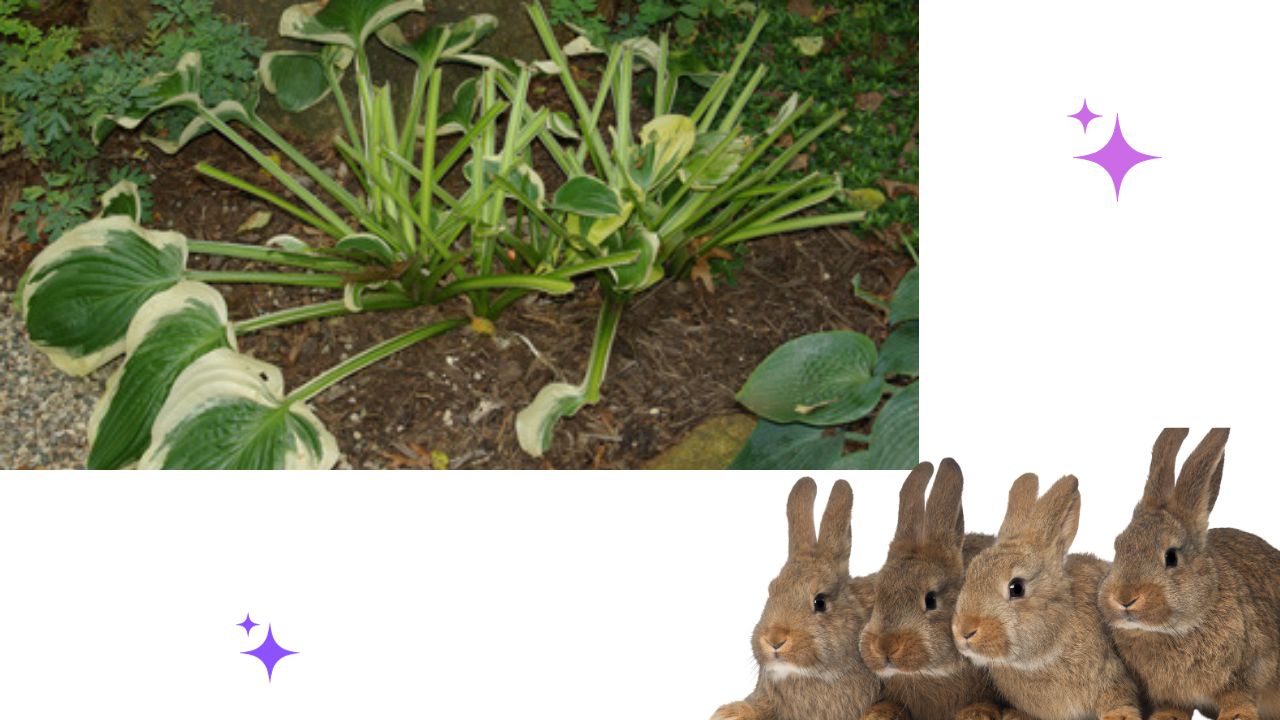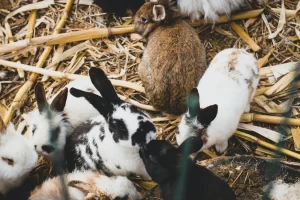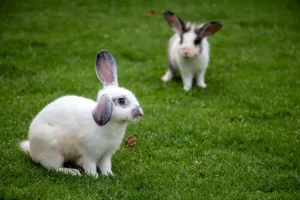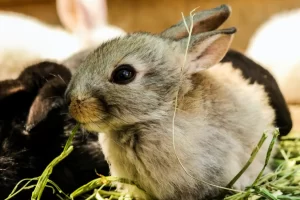Do you wonder if your plants will bounce back after being damaged by rabbits? Rest assured, with the right approach, you can promote regrowth and restore your garden’s beauty.
Understanding the factors that affect plant resilience and recovery is key. By implementing pruning and trimming strategies, enriching the soil, and utilizing effective rabbit deterrents, you can nurture your plants back to health.
In this article, we will guide you through the steps to enhance plant recovery and prevent future damage.
In This Article
- 1 Key Takeaways
- 2 Factors Affecting Plant Regrowth After Rabbit Damage
- 3 Understanding Plant Resilience and Recovery
- 4 Steps to Enhance Plant Recovery From Rabbit Damage
- 5 Pruning and Trimming Strategies for Damaged Plants
- 6 Soil Amendments for Promoting Plant Regrowth
- 7 Effective Rabbit Deterrents to Prevent Future Damage
- 8 Patience and Care: Nurturing Plants Back to Health
- 9 Frequently Asked Questions
- 9.1 What Are Some Common Signs of Rabbit Damage to Plants?
- 9.2 Can Plants Recover From Severe Rabbit Damage, or Is It Best to Replace Them?
- 9.3 How Long Does It Typically Take for Plants to Regrow After Rabbit Damage?
- 9.4 Are There Any Specific Plants That Are More Resistant to Rabbit Damage?
- 9.5 Is It Necessary to Remove All Damaged Plant Parts Before the Regrowth Process Begins?
- 10 Conclusion
Key Takeaways
- Soil quality, including organic matter and nutrients, plays a crucial role in plant regeneration after rabbit damage.
- Different plant species have varying abilities to recover, and the extent of damage affects the recovery time.
- Environmental conditions such as soil quality, moisture, and sunlight have an impact on plant recovery.
- To enhance plant recovery from rabbit damage, physical barriers, proper nutrition, regular monitoring, pruning, and soil amendments are important.
Factors Affecting Plant Regrowth After Rabbit Damage
You should consider the soil quality when assessing the factors affecting plant regrowth after rabbit damage. Soil quality plays a crucial role in the ability of plants to regenerate after being grazed by rabbits.
The damage caused by rabbit grazing can disrupt the root system of plants, making it difficult for them to obtain the necessary nutrients and water from the soil. Therefore, it’s important to ensure that the soil is rich in organic matter and nutrients to support plant regrowth. Additionally, the soil should have good drainage to prevent waterlogging, which can hinder root development.
Conducting a soil analysis can provide valuable information about the nutrient levels and pH of the soil, allowing you to make informed decisions about soil management and amendments to promote plant regeneration.
Understanding Plant Resilience and Recovery
Sometimes, plants can bounce back quickly after damage, but it’s important to understand how they recover and build resilience. When it comes to plant rehabilitation after rabbit damage, there are several key factors to consider:
- Plant species: Different plants have varying abilities to recover from damage. Some species are more resilient and can regrow quickly, while others may struggle to recover fully.
- Extent of damage: The severity of the damage inflicted by rabbits plays a significant role in a plant’s ability to recover. Plants that have been heavily grazed or completely defoliated may take longer to bounce back.
- Environmental conditions: Factors like soil quality, moisture levels, and sunlight availability also impact a plant’s recovery process. Providing optimal conditions can enhance their rehabilitation.
- Managing rabbit populations: Implementing effective strategies to control rabbit populations is crucial for minimizing damage and allowing plants to recover. This can include techniques like fencing, habitat modification, or targeted population management.
- Assistance and support: Providing care and support to damaged plants, such as pruning, fertilizing, or protecting them from further harm, can significantly aid in their rehabilitation and enhance their chances of regrowth.
Understanding these factors and taking appropriate measures can help ensure successful plant rehabilitation after rabbit damage. By managing rabbit populations and providing the necessary support, we can help plants recover and thrive, contributing to a healthier and more resilient ecosystem.
Steps to Enhance Plant Recovery From Rabbit Damage
If you want to enhance plant recovery from rabbit damage, it’s important to implement effective strategies and provide necessary care and support.
Rabbit damage prevention is essential to ensure the successful regrowth of damaged plants. To begin with, it’s crucial to protect vulnerable plants by using physical barriers such as fences or mesh. This will prevent rabbits from accessing and damaging the plants.
Additionally, providing proper nutrition and watering is vital for plant recovery. Ensuring that plants receive adequate sunlight and nutrients will promote their growth and aid in the healing process.
Regularly monitoring the plants for any signs of damage or disease is also necessary to address any issues promptly.
Pruning and Trimming Strategies for Damaged Plants
To promote healthy regrowth, consider pruning damaged branches and trimming overgrown areas of the plant. Pruning techniques can help rejuvenate the plant by removing dead or diseased branches, allowing new growth to thrive. Trimming overgrown areas helps maintain the plant’s shape and encourages better airflow and sunlight penetration.
Here are five pruning and trimming strategies that can evoke a sense of excitement and satisfaction in serving your plants:
- Use sharp, clean pruning shears to make precise cuts.
- Remove branches that cross or rub against each other, promoting better overall health.
- Trim back excessive growth to allow for better nutrient distribution.
- Cut at a 45-degree angle just above a bud or lateral branch to promote new growth.
- Ensure proper sanitation by disinfecting tools between cuts to prevent disease spread.
Soil Amendments for Promoting Plant Regrowth
You can consider adding organic matter, such as compost or manure, and using a combination of fertilizers and soil conditioners to improve soil fertility and promote plant regrowth.
Before applying any amendments, it’s recommended to conduct a soil test to determine the nutrient levels and pH of the soil. This will help you understand which specific nutrients are lacking and need to be supplemented.
Organic fertilizers, derived from natural sources such as plants or animals, are a great choice as they provide slow-release nutrients and improve soil structure. Additionally, they enhance microbial activity in the soil, aiding in nutrient availability.
Incorporating these amendments into the soil won’t only replenish nutrients but also enhance the overall health of the soil, creating optimal conditions for plants to regrow and thrive.
Effective Rabbit Deterrents to Prevent Future Damage
There are several options, such as fences or repellent sprays, that can effectively deter rabbits and prevent future damage to your plants. Rabbits can wreak havoc on your garden, so it’s crucial to take action to protect your plants.
Here are some natural remedies and fencing options to consider:
- Plant rabbit-resistant species: Choose plants that rabbits are less likely to find appealing, such as lavender, marigolds, or Russian sage. This can help deter rabbits from entering your garden in the first place.
- Install a rabbit-proof fence: A sturdy fence around your garden can keep rabbits out. Make sure it’s buried at least 6 inches deep to prevent them from burrowing underneath.
- Use repellent sprays: There are natural repellent sprays available that can deter rabbits. These sprays usually contain substances like garlic or hot pepper, which rabbits find unpleasant.
- Create physical barriers: Consider using wire mesh or chicken wire to protect individual plants or create a barrier around your garden.
- Encourage natural predators: Attracting natural predators like owls, hawks, or snakes can help keep rabbits away.
Patience and Care: Nurturing Plants Back to Health
If you are patient and take care of them, plants will gradually grow back and regain their health. Nurturing techniques play a crucial role in plant rehabilitation, helping them recover from damage caused by various factors, including rabbit grazing. To effectively nurture damaged plants, it is important to understand their specific needs and provide the necessary care. This can include pruning damaged leaves or branches, ensuring proper watering and fertilization, and protecting plants from further harm. Consistency in providing care is key, as plants require time to heal and regenerate. By implementing nurturing techniques and giving plants the attention they require, you can witness their resilience and the beauty they bring to the environment. Remember, plants are living beings, and with your serving hand, they can thrive once again.
| Nurturing Techniques | Plant Rehabilitation |
|---|---|
| Pruning | Encourages new growth and removes damaged parts |
| Watering | Provides essential hydration for recovery |
| Fertilization | Supplies nutrients to support plant health |
| Protection | Shields plants from further harm |
| Consistency | Allows plants time to heal and regenerate |
Frequently Asked Questions
What Are Some Common Signs of Rabbit Damage to Plants?
Common signs of rabbit damage to plants include chewed stems, leaves, and flowers, as well as gnawed bark. To protect plants, use physical barriers like fences or netting, repellents, or plant rabbit-resistant varieties.
Can Plants Recover From Severe Rabbit Damage, or Is It Best to Replace Them?
Plants are resilient and can recover from severe rabbit damage through natural or assisted regrowth. However, it may be best to replace them if the damage is extensive. Effective deterrents and repellents can prevent future rabbit damage.
How Long Does It Typically Take for Plants to Regrow After Rabbit Damage?
Factors affecting the regrowth time after rabbit damage include the severity of the damage, plant species, and growing conditions. Techniques to prevent rabbit damage to plants include using fencing, repellents, and creating barriers.
Are There Any Specific Plants That Are More Resistant to Rabbit Damage?
You can prevent rabbit damage by planting rabbit-resistant plants and using deterrents like fences and repellents. Some plants, like marigolds and daffodils, are less appealing to rabbits. With proper care, damaged plants can grow back.
Is It Necessary to Remove All Damaged Plant Parts Before the Regrowth Process Begins?
Pruning damaged plant parts is necessary for regrowth. However, leaving some damaged parts can benefit the regrowth process. These parts may provide nutrients and protection for new growth, aiding in the recovery of the plants.
Conclusion
In conclusion, plants have a remarkable ability to recover from rabbit damage, given the right conditions and care.
Just like a wounded soldier healing in a supportive environment, plants can bounce back and thrive with proper pruning, soil amendments, and rabbit deterrents.
With patience and nurturing, these resilient organisms can once again flourish, like a phoenix rising from the ashes.
Remember, nature’s resilience is awe-inspiring, and our efforts can make a significant impact on their regrowth.





